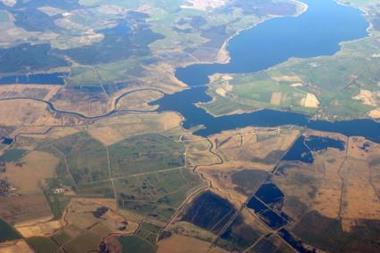Some of the largest US insurance companies are campaigning for state or federal government catastrophe funds. They argue that under the current system, the federal government already subsidises rebuilding after disasters, and the money would be better spent in an organised and predictable way.
At present, the federal government provides flood insurance through the National Flood Insurance Program, which was devastated by Hurricane Katrina in 2005, and terrorism reinsurance, at least until the end of 2007, through the Terrorism Risk Insurance Extension Act (TRIEA) of 2005.
In its position paper, Government Catastrophe Funds: An Idea That's Bad for America's Insureds, the RAA argues, "Protecting the property of those who live in areas affected by natural catastrophes is most effectively and efficiently done through properly priced and well managed private insurance and reinsurance arrangements."
Q: What are the main issues today affecting the provision of catastrophe reinsurance for peak US risks? For domestic reinsurers? For international reinsurers?
A: Domestic and international reinsurers face the same challenges in peak zones in the United States: pressure from rating agencies to manage accumulations and aggregates responsibly - interpreted to be more conservative than in prior years.
In addition, insurers and their reinsurers are facing increased modelled exposure assessments, reflecting increased demand for risk transfer and strains on reinsurance capacity allocation to clients. Notable as well is the increased public demand for affordable coverage and regulatory constraints on rate adequacy. The focus in 2007 will increasingly be on the role of government in addressing catastrophe risk: mitigation, rate regulation and state catastrophe funds.
Q: At what size of catastrophe or combination of catastrophes do you believe the US private market would begin to show signs of failure? Begin to see systemic failure?
A: The insurance and reinsurance mechanism has proved to be remarkably resilient in the face of significant catastrophe losses: 9/11, the hurricanes of 2004 and Katrina, Rita and Wilma in 2005. With the increasing role of the capital markets in supplying securitised products and new capital attracted to the business for existing players, new reinsurers and sidecars, the market challenges the notion that it cannot finance natural catastrophe risk. Terrorism risk is different, of course, because of its unique underwriting challenges and the role that government plays in dealing with terrorists and their covert activities. A government role in financing this risk appears essential.
Q: With possible maximum loss estimates for US peak risks reaching $100 billion and more, what role does the RAA believe state and federal governments should play in managing the impact of these risks?
A: The government has a significant role in addressing catastrophe risk: responsible land use planning to reduce the exposure of citizens, responsible insurance company rate regulation to insure a solvent market and encouraging or requiring hazard mitigation through building codes and tax incentives.
Q: Would you like to see the US government privatise the federal flood insurance programme? If not, why not?
A: Without an appropriate spread of risk and with existing adverse selection issues, the flood programme is not currently amenable to privatisation. The programme also has a subsidised policyholder base. Reliance on the private sector to market the programme is entirely appropriate. Without fundamentally sound rates and a broadened policyholder base, however, the programme cannot be privatised.
Q: How concerned are you about the ability of reinsurers to enforce exclusions or coverage limits in the event of devastating catastrophe?
A: The integrity of insurance and reinsurance contracts is essential to the basis of providing capacity. The courts have from time to time interpreted insurance contracts in light of current political or legal trends; however, companies need consistent coverage interpretations to have comfort in providing capacity in markets.
Q: Your 2007 conference is concentrating on catastrophe modelling. What do you think the impact of modelling on reinsurance has been?
A: Modelling has been of extraordinary benefit in assessing catastrophe risk and in assisting companies in evaluating appropriate pricing at both the primary and reinsurance levels. Without it, insurers would be flying blind. As has been seen in 2006, adjusting the models is a continuous process - as it should be in light of actual experience and new scientific insights. Those adjustments may at times be difficult, but they are an essential component of a company's risk assessment.
Q: What approach is the US reinsurance market taking to the issue of climate change?
A: Attitudes seem to be changing among US insurers about the effects of climate change. Insurers increasingly respect the growing body of scientific evidence about the consequences of climate change. While US insurers seem reluctant to lobby for carbon-related legislation, they are coming to recognise that climate science must be understood and incorporated in risk assessment.
- Lee Coppack is the editor of Catastrophe Risk Management.
Email: lee.coppack@cat-risk.com
Website: www.cat-risk.com



















